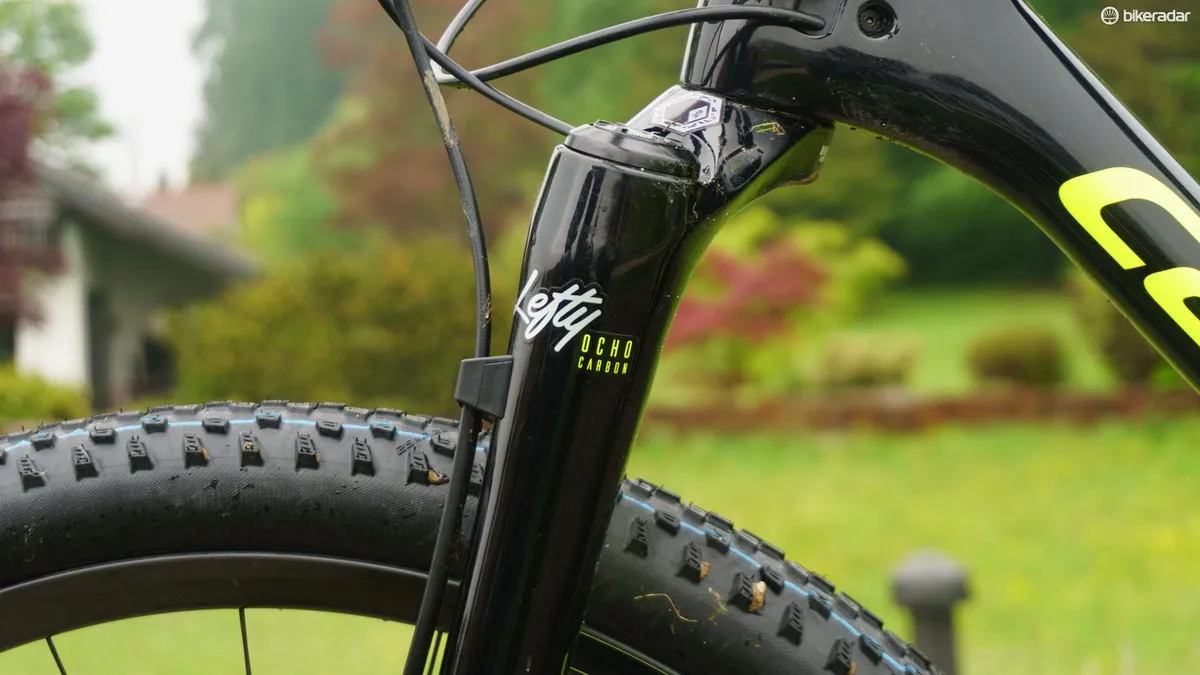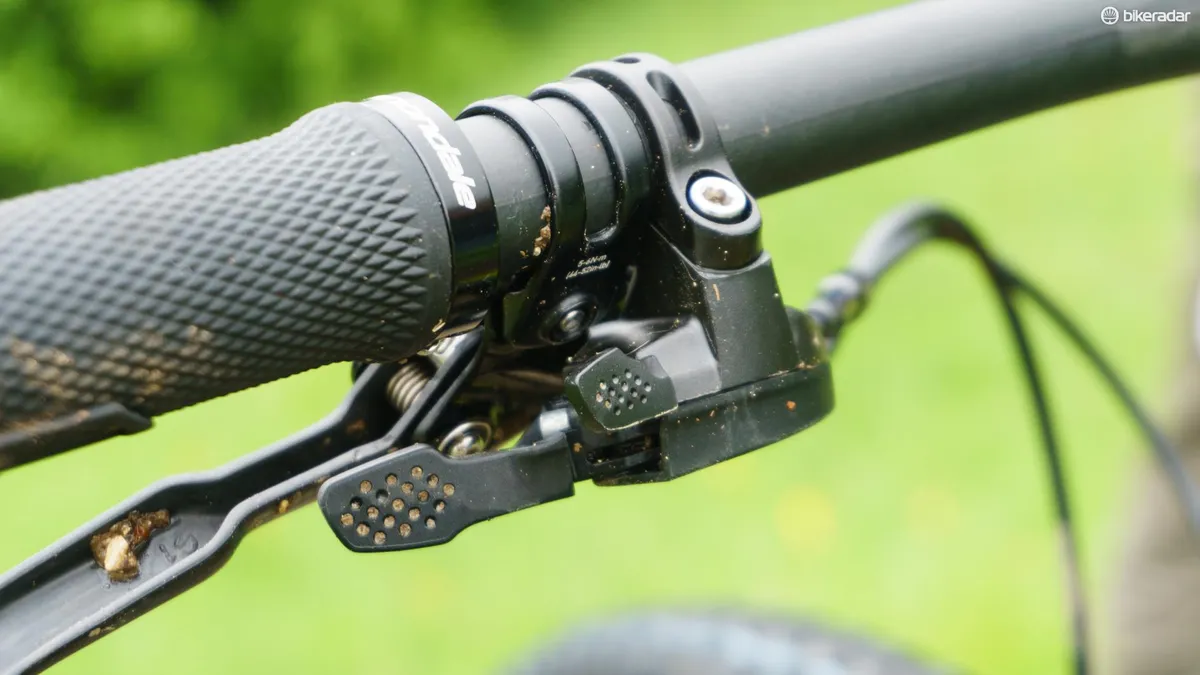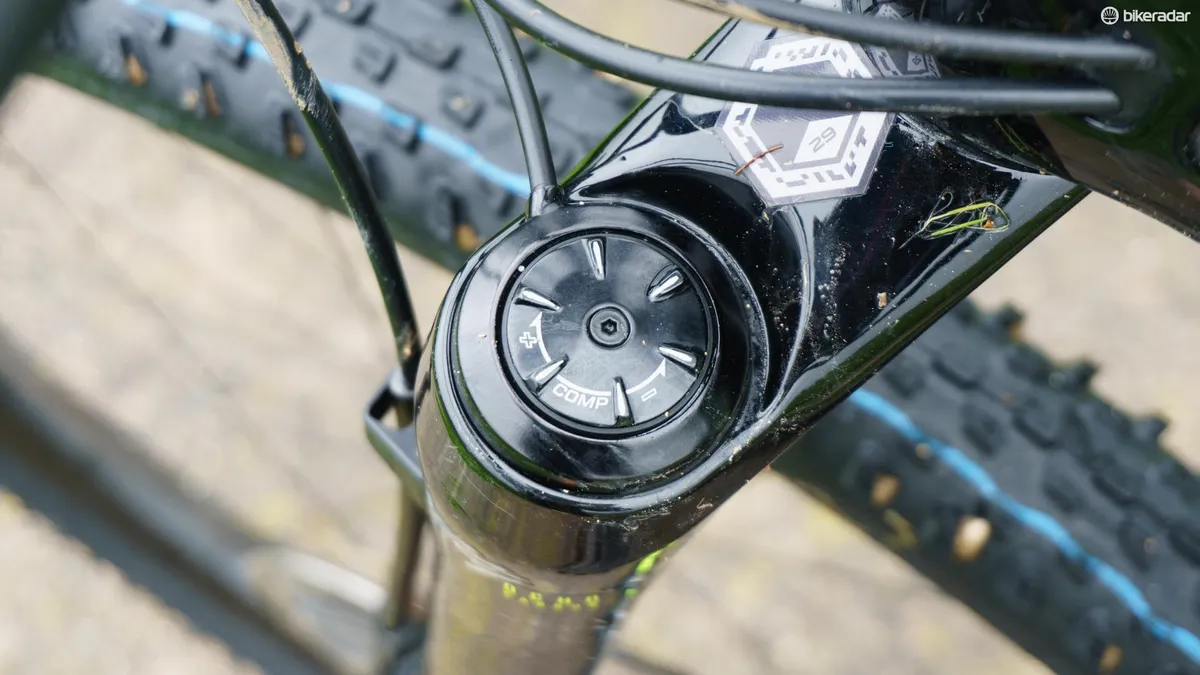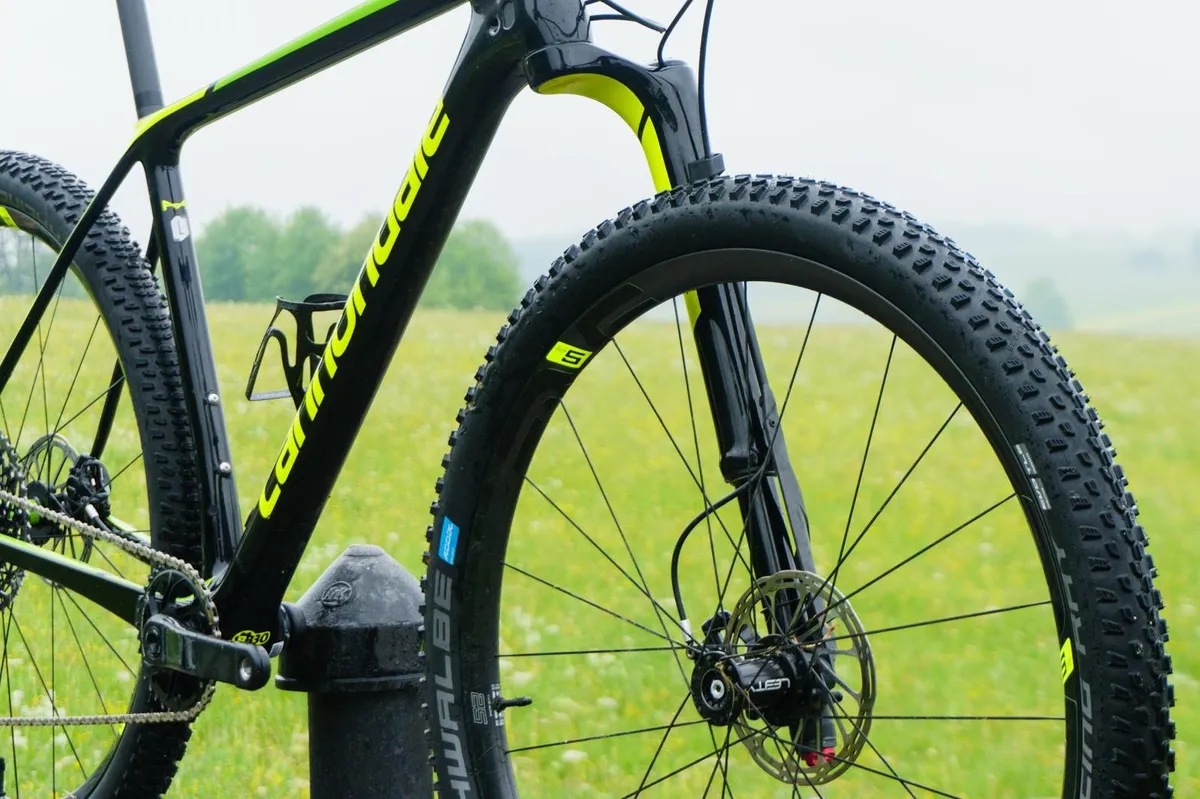The Ocho is the eighth iteration of the Cannondale Lefty in a cross-country guise and, alongside many internal updates, has made a move from a dual-crown design to a single-crown, giving the fork a profile that is totally unique in the mountain bike world.
Why call it Ocho?

Why name the fork in Spanish? Apparently, it’s just because Ocho sounds cooler than Eight, and it fits in with Cannondale's ongoing O-prefixed naming conventions. Fair enough!
So what about that shape?
The biggest story is, of course, the move from a dual-crown setup to a more conventional single-crown configuration.
This has dropped a not-insignificant 250g from the previous fork while surpassing it in stiffness.
Check out our first ride review of the Cannondale F-SI on our YouTube channel
The Ocho comes in at a claimed 1,446g in the carbon chassis and 1,735g in the alloy version.
For context, the carbon Ocho is a touch heavier than a Fox 32 SC (1,327g) and a smidge lighter than a Rockshox SID (1,530g).
Cannondale claims that it could have gone even lighter with the new fork, but this would have significantly compromised stiffness.

Oh, and while you’re here, don’t feel the need to make a remark about the fork looking like half of a Rockshox RS1; I’ve already made that crappy joke about ten times in the last two days.
Refined stiffness
The new Lefty Ocho is claimed to be stiffer laterally and stiffer fore and aft than the previous generation. If true, this is an impressive feat for a platform that was already stupendously stiff in its short-travel guises.
However, in a fairly unconventional move for the world of cross-country (where stiffness triumphs over all else), the torsional stiffness of the Lefty Ocho is 14 percent lower than the old fork in a bid to improve tracking in rough terrain.
A totally new fork inside

Chief among the changes to the internals of the fork is the move from four to three roller-bearing assemblies. This triangulated arrangement is said to significantly reduce friction as well as weight.
All three of the roller bearing assemblies are now held together by a lightweight plastic cage, which Cannondale calls the Delta Cage. This ensures that the bearing assemblies cannot move independently of each other, again reducing friction.
All of this adds up to a fork that is claimed to have a whopping 141 percent lower static friction and 75 percent less dynamic friction than a Fox 32 or Rockshox SID.
Easier to live with, more tuneable


Those who maintain their own bikes will be delighted to hear that the Lefty Ocho features a cable lockout remote. The funky hydraulic lockout on the old fork was cool but notoriously fiddly to service.
Tuning wise, the fork features six clicks of compression adjustment and 23 clicks of rebound adjustment.
Unofficially, it was technically possible to add volume spacers to the old fork, but the new Ocho now features proper OEM volume spacers, which Cannondale is calling Ramp Clamps. Adding a pair of these increases the force required to bottom out the fork by roughly 10 percent.

A particularly nice touch on the fork is the side-loaded air valve. This is much easier to access than the old bottom-mounted valve and is angled such that it will never skoosh fluid anywhere near the rotor when adjusting pressure.
The fork retains the moto-style Guide Guard carbon stanchion cover, though this has been significantly slimmed down.
Fewer proprietary parts = wider compatibility
The new fork ditches the proprietary steerer of old in favour of a regular 1-½in to 1-⅛in tapered steerer. This means that the new Lefty Ocho will work with pretty much any modern cross-country bike out there.
On that note, the fork isn’t going to be available to buy separately at the time of launch, but Cannondale expects to start shipping aftermarket forks in the next 12–18 months.
Cannondale reckons that the clearances of the new fork shouldn’t pose an issue on most frames. With that said, the size small F-Si has a bump stop built into the headset (think Trek’s Knock Block) to stop the crown from striking the down tube.
The new fork uses the same hub standard as old, so any wheels built around a Lefty hub from the last few years should work.
Quick-release brake

Those that have lived with previous versions of the Lefty will be all too aware that wheel swaps weren’t the quickest, with the fork requiring you to fully undo two Allen-head bolts to remove the brake caliper and mount.
The new Lefty Ocho features the all-new Stop Lock brake mount, a funky new quick release system that releases the caliper and mount by holding down a button and turning the 5mm-head bolt 180-degrees.
So how does it ride?

You’ll have to read our first ride review of the new F-Si and fork to find out!



